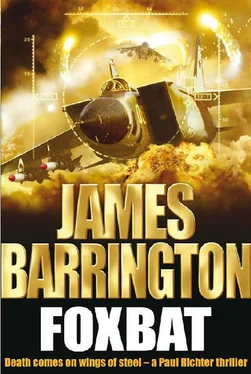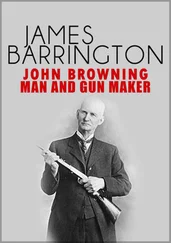‘Yes,’ Bykov said, bending over to study the binders. ‘We’re investigating unusual aircraft movements. Has Slavgorod North been involved in any deployment of fighters or interceptors heading east?’
‘Of course.’ Denikin nodded immediately. ‘This is a staging airfield. We’re regularly refuelling aircraft in transit.’ He reached for the transit orders binder, flicked through the pages until he found what he was looking for, and pointed. ‘Here, for example: five days ago one Sukhoi Su-27 and two Su-24s staged through here. And this order is for two MiG-25s that arrived from Bobrovka two weeks ago. They were re-fuelled, and the pilots stayed here overnight, then they left the following morning.’
‘Where’s Bobrovka?’ Richter asked, ‘and where were they going when they left here?’
Denikin glanced questioningly at Bykov, who gave a slight nod. ‘Bobrovka’s near Kinel, in Samarskaya, and from here the two interceptors were going on to Domna,’ Denikin replied, after glancing down at the page in the binder. Richter still looked blank, so the colonel walked across to a wall map showing the entire extent of the Asian landmass and picked up a wooden pointer.
‘That route took the aircraft in a more or less straight line across Russia from west to east,’ he said, indicating each base in turn.
‘What was their ultimate destination?’ Bykov asked.
‘Chuguyevka. We weren’t informed of their original airfield of departure, only that they were routing to us from Bobrovka. From here, they flew to Domna, then Komsomolsk-na-Amur and on to Chuguyevka.’ Denikin’s pointer traced the remainder of the route across the continent.
‘That’s one of our easternmost MiG-25 bases,’ Bykov explained for Richter’s benefit. ‘It’s not far from Vladivostok, sandwiched between China and the Sea of Japan. I think it’s usually indicated on American charts as Bulyga-Fadeyevo.’
‘I know where it is,’ Richter confirmed. ‘We talked earlier about Viktor Belenko, if you recall.’
A look of pain flashed across Denikin’s face at mention of the renegade Foxbat pilot’s name. Clearly that defection was still something of a sore point in the Russian Air Force, even forty years later.
‘Have there been any other movements of MiG-25s through Slavgorod?’
Denikin flicked back through the binder and found transit orders for three more pairs of Foxbats, all following broadly the same route across the CIS, and all with Chuguyevka listed as their ultimate destination.
‘How many MiG-25s should there be in total at Chuguyevka?’
‘The resident squadron is 530 IAP,’ Denikin said, ‘and they fly a mixture of MiG-25s and MiG-31s. I don’t know what their normal strength is, but probably around thirty-five to forty aircraft.’
‘Very well,’ Bykov said. ‘We’ll need copies of all the movement and transit orders relating specifically to MiG-25s for the last six months. Please organize that immediately.’
Denikin saluted briskly, called one of the operations staff over to the plotting table and began briefing him. Bykov motioned Richter to one side of the room, out of earshot.
‘Those documents look authentic to me, which probably means something’s going on in Moscow that I don’t know about. I’ll need to check the audit trail of each order and find out who issued the original instruction, and that’s going to take time. It looks like whoever’s stealing our aircraft has a very senior officer working for them, probably at Arbat Square.’
He was referring to the location of the Russian Ministry of Defence in downtown Moscow.
Richter gazed at him thoughtfully. ‘You’re probably right. And as all the MiG-25s we’ve seen any details of are ending up at Chuguyevka, their final destination has to be North Korea. Nothing else makes sense. If they were going to China, they’d track east or south-east from Domna, and certainly wouldn’t go anywhere near Komsomolsk or Chuguyevka. Both Japan and South Korea are American allies, and if they wanted fighter aircraft they’d buy something made by Northrop or McDonnell Douglas, not old-fashioned MiGs. North Korea’s the only destination that makes any sense.’ He paused, then continued. ‘And there’s something else.’
Bykov nodded, following his train of thought. ‘The North Koreans have a nuclear capability. Their possession of atomic weapons, plus these MiG-25s, and their rocky relationship with South Korea, make a very worrying combination. Investigating the mechanics of how they organized this will have to wait. You’d better talk to your people back home, and I must go straight back to Moscow.’
‘Is there anything else, General?’ Denikin asked, walking over towards them.
Bykov shook his head, but Richter had one more question. ‘We’re going to have to leave here shortly, Colonel, so we won’t have time to talk to the crew of the Ruslan. What’s that aircraft doing here?’
‘Just like most of the aircraft we handle, it’s staging through. It’s a regular run, carrying spares and replacement parts.’
‘Spares for what exactly, Colonel? And where’s its destination?’
Denikin smiled slightly. ‘Chuguyevka, as a matter of fact, and its cargo is MiG-25 and MiG-31 parts for 530 IAP.’
‘Thank you, Colonel.’ Richter turned and followed Bykov out of the Operations Room. ‘Cheeky bastards,’ he muttered, as they headed down the corridor together. ‘My bet is that most of the MiG-25 stuff on that Ruslan will be smuggled straight out of Chuguyevka, down to Vladivostok, loaded onto a ship and taken down the coast to Ch’ŏngjin or some other North Korean port. This has been altogether a really slick operation.’
While Bykov found an internal telephone to order a car to take them back to the Antonov, Richter pulled out his Enigma mobile phone, checked the signal, then dialled Hammersmith. The T-301 offers military-level encryption to both parties of a conversation, as long as they’re both using Enigmas or something compatible, but it looks pretty much like any other mobile.
When the Duty Officer answered, Richter gave him a brief summary of what he’d discovered so far.
‘Wait one.’
Thirty seconds later Simpson was on the line. ‘Are you sure about this, Richter?’
‘Depends what you mean by “this”. I’m certain that the Russian Air Force has lost a bunch of Foxbats, yes. The route we’ve been tracking across Russia suggests that the client state is North Korea. What I don’t know is what the men in Pyongyang intend to do with their new toys, but they wouldn’t have gone to all this trouble just to stand around and admire them. I’m also worried about those truckloads of Acrids stolen in Bulgaria. I’d lay money that, no matter where they are now, the ultimate destination of those missiles is North Korea.’
‘I tend to agree. The question is, what do we do about it? Is this just the North Koreans upgrading their air force with a bunch of old Russian interceptors, or is it something more than that?’
‘It has to be more devious. If they wanted newer aircraft than they’ve got already, they could have bought them openly. Plenty of nations are happy to deal with Pyongyang if there’s a decent profit involved. And why choose Foxbats, which are old and difficult to fly and, according to Bykov, were designed from the start to intercept ICBMs? I’m thinking that might suggest North Korea is preparing to get involved in a nuclear exchange, and they’ve acquired those MiGs as a last-ditch defence against nuclear retaliation.’
‘But against who?’ Simpson was openly sceptical. ‘The South Koreans don’t have any nukes, and I really don’t see even those idiots at Pyongyang trying to take on either China or Russia. And, no matter what missiles they use, most of America is well out of range.’
Читать дальше












